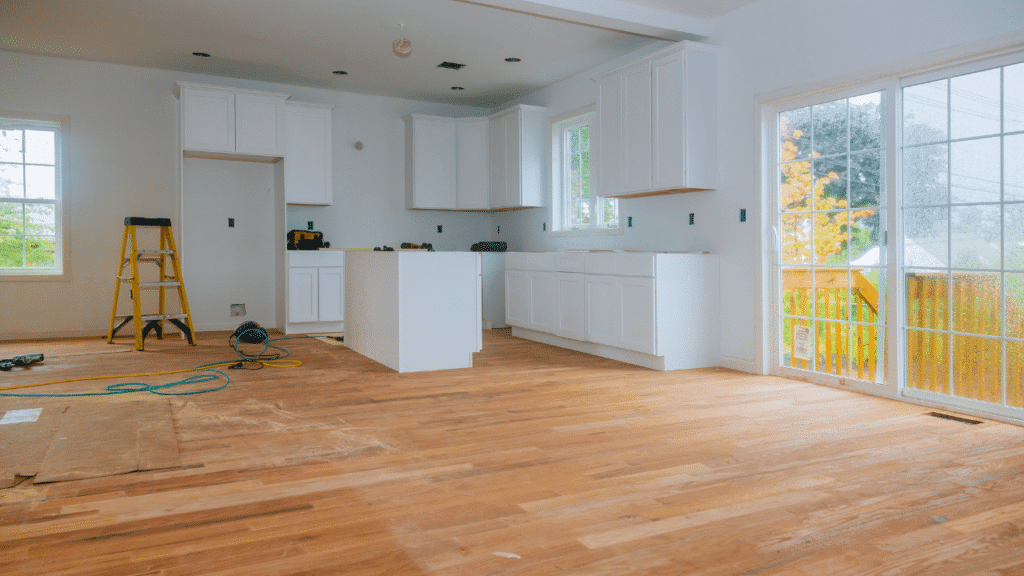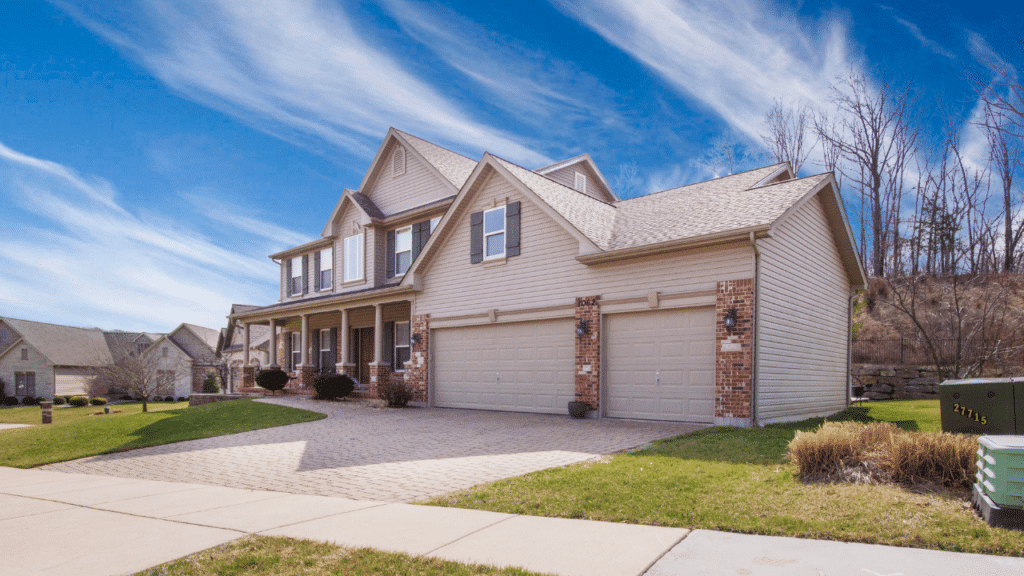Marketing your home improvement business effectively hinges on a well-designed website that showcases your best work. You want to create a digital space that not only highlights your projects but also engages potential clients. In this blog post, we’ll share important website design tips tailored to help you present your home improvement skills in the best light, ensuring your site stands out in a competitive market. Let’s probe strategies that will captivate your audience and elevate your online presence.
Key Takeaways:
- Visual Appeal: Use high-quality images to showcase your projects, ensuring your website reflects your best work and draws potential clients in.
- Clear Navigation: Design your website with user-friendly navigation to make it easy for visitors to find information about your services, past projects, and contact details.
- Responsive Design: Optimize your website for mobile devices to reach a wider audience and improve user experience, as more clients search for services on their phones.

Understanding Your Target Audience
Before you investigate designing your website, it’s important to understand who you are targeting. The success of your home improvement marketing largely depends on how well you can tailor your online presence to meet the needs and interests of your potential clients. For more insights, explore the 10 Important Principles for Remodeling Website Design.
Identifying Ideal Clients
Against the backdrop of a competitive market, knowing your ideal clients makes a significant difference in your marketing strategy. Think about the demographics, budget ranges, lifestyle preferences, and the specific types of projects they are interested in. This clarity allows you to create targeted content that resonates with potential clients.
Analyzing Client Preferences
By examining what your clients prefer, you can tailor your offerings and website to better serve their needs. Investigate which styles, materials, and home features appeal to them. Look for patterns in past projects and testimonials to inform your website’s content and design.
Clients often appreciate personalized experiences and value when selecting home improvement services. You can gather feedback through surveys, social media interactions, or even direct conversations. Recognizing their preferences not only helps in effectively showcasing your work but also guides your marketing strategies to align with what resonates most with your audience.
Creating Client Personas
Audience segmentation is key to understanding who you’re marketing to. Creating detailed client personas helps identify the various segments within your target audience, including their goals, pain points, and decision-making processes. With these personas, you can develop content that speaks directly to their unique circumstances.
As you create client personas, think about including specific attributes like age, profession, family structure, and design preferences. This detailed portrayal helps you visualize your audience better, ensuring that every website element, from imagery to messaging, appeals directly to your ideal clients’ needs and aspirations. Tailoring your website experience becomes much simpler when you have a clear understanding of who you are serving.
Key Elements of Effective Website Design
While crafting your home improvement website, understanding the imperative elements of effective design can significantly enhance your online presence. A well-designed website not only highlights your portfolio but also ensures that potential clients can easily navigate and engage with your content.
User Experience (UX) Principles
By prioritizing user experience (UX) principles, you can create a site that feels intuitive and welcoming. This includes easy navigation, clear calls-to-action, and a logical layout that guides visitors through your services and projects effortlessly.
Mobile Responsiveness
About 70% of users browse the web on mobile devices, making mobile responsiveness vital. Your website must display seamlessly across various screen sizes, ensuring an engaging experience for all visitors regardless of the device they use.
Indeed, Google has also emphasized the importance of mobile-friendly design in its search rankings. By adopting responsive design techniques, you can enhance usability and keep users engaged, reducing bounce rates and increasing chances of converting visitors into clients. This adaptability not only reflects professionalism but also caters to the growing trend of mobile browsing.
Fast Loading Times
Design plays a significant role in the loading speed of your website. A fast-loading site keeps users engaged and can improve your search engine rankings, leading to greater visibility and traffic.
Elements such as optimized images, streamlined code, and efficient hosting solutions contribute to faster loading times. By ensuring your website loads quickly, you provide a positive browsing experience that helps maintain interest and encourages users to explore your work further, ultimately increasing the likelihood of gaining new clients.
Showcasing Your Work
All home improvement businesses must focus on showcasing their best work effectively. It’s vital to create a compelling online presence that draws in potential clients and reflects your craftsmanship. To learn more about what you should include on your website, check out What should I include on my website to make it really work ….
High-Quality Imagery

Above all, high-quality imagery is important when showcasing your work. Use professional photos that highlight the details, colors, and textures of your projects. This not only attracts attention but also illustrates the level of quality you bring to each job. Clients are more likely to trust your expertise when they see stunning visuals of your past work.
Creating an Online Portfolio
By establishing an online portfolio, you can effectively demonstrate your capabilities and past projects. Your portfolio should be organized, showcasing a variety of completed projects that speak to different styles and preferences in home improvement. Highlighting diverse examples encourages potential clients to envision their own renovation possibilities.
In addition, make sure to include detailed descriptions for each project in your online portfolio. Explain the challenges you faced, the solutions you provided, and the results you achieved. This information enriches the viewer’s experience and adds depth to your showcased work, helping to build trust and credibility with potential clients.
Using Video Content
By incorporating video content into your showcase, you can engage visitors in a dynamic way. Video allows you to tell a story, demonstrating your process from start to finish. This not only captures attention more effectively than static images but also allows potential clients to see the level of detail and care you put into your work.
HighQuality video content can also include client testimonials, time-lapse footage of projects, or walk-throughs of completed spaces. These engaging elements offer an immersive experience that static images can’t provide. Invest in good video production to convey your professionalism and commitment to quality in home improvements.
Crafting Compelling Content
Once again, creating a strong online presence in the home improvement sector hinges on your ability to craft compelling content. Engaging descriptions, authentic testimonials, and well-illustrated case studies can transform your website into a powerful marketing tool, allowing potential clients to envision their projects under your expert guidance.
Writing Engaging Descriptions
Compelling descriptions breathe life into your projects, highlighting not just the aesthetic but also the functionality of your work. Use vivid language that paints a picture in the reader’s mind, while explaining the materials used, the design process, and the transformation that took place. Your descriptions should aim to evoke emotion, making clients excited about the possibilities of their own homes.
Utilizing Testimonials and Reviews
Between the highly competitive nature of the home improvement industry, testimonials and reviews provide a layer of credibility that can set you apart. Encouraging satisfied clients to share their experiences offers social proof, reassuring prospective customers that you deliver high-quality work.
With this approach, you can curate a testimonials section that features detailed feedback from previous clients. This not only builds trust but also highlights various aspects of your service—ranging from craftsmanship to customer service. Don’t just showcase star ratings; instead, emphasize specific comments that reflect your strengths and the satisfaction of your past clients.
Incorporating Case Studies
Testimonials can be powerful, but incorporating case studies deepens potential clients’ understanding of what you can achieve. Case studies allow you to showcase the entire project lifecycle, from conception to completion, while demonstrating the impact of your work through data-driven results.
- Project A: Kitchen remodel resulted in a 30% increase in property value.
- Project B: Bathroom renovation improved functionality, leading to a 90% satisfaction rate from the homeowner.
- Project C: Landscaping overhaul created a sustainable yard, decreasing water usage by 25%.
- Project D: Interior redesign led to a 50% decrease in energy bills for the homeowners.
Incorporating Case Studies
And by presenting case studies in an easily digestible format, you provide potential clients with a roadmap that indicates the success they can expect. Each project can include challenges faced, solutions implemented, the satisfaction of clients, and measurable outcomes. This narrative not only showcases your skills and creativity but also directly relates to the client’s aspirations, effectively guiding them toward conversion.
SEO Strategies for Home Improvement Websites
Your home improvement website can thrive with the right SEO strategies in place, helping you attract more visitors and ultimately convert them into customers. To enhance your online presence, focus on keyword research, on-page SEO best practices, and local SEO techniques that cater specifically to your services and target audience.
Keyword Research and Optimization
With effective keyword research, you can identify the terms potential customers use when seeking your services. Use tools like Google Keyword Planner or SEMrush to uncover high-traffic keywords related to home improvement. Once identified, optimize your website content by integrating these keywords naturally, ensuring that your pages rank higher in search engine results.
On-Page SEO Best Practices
Below are some necessary on-page SEO best practices to implement on your home improvement website. These techniques include optimizing title tags, using header tags, enhancing meta descriptions, and adding alt text to images. Properly structuring your content allows search engines to crawl and index your site more efficiently, which can improve your visibility.
The implementation of these on-page SEO practices can significantly enhance the user experience and encourage longer page visits. Use descriptive and keyword-rich title tags to improve click-through rates and create engaging meta descriptions that summarize your page’s content effectively. Additionally, use header tags (H1, H2, H3) to structure your content logically, making it easier for both users and search engines to navigate your website.
Local SEO for Home Improvement Businesses
On-page optimization isn’t the only focus; local SEO is necessary for home improvement businesses targeting specific geographic areas. By optimizing your online presence for local search, you increase your chances of connecting with potential customers nearby.
Improvement in your local SEO efforts involves creating and optimizing your Google My Business profile, which helps your business appear in local searches and Google Maps results. Encourage satisfied customers to leave positive reviews, as they play a significant role in local search rankings. Additionally, make sure your website includes local keywords and relevant content to cater to your community’s specific home improvement needs, ultimately driving more traffic and leads to your business.
Integrating Calls to Action (CTAs)
Unlike a traditional website, your home improvement business’s website must have clear and compelling calls to action (CTAs) to guide potential customers toward taking the next step. Effective CTAs help visitors understand what actions they can take, whether that’s requesting a quote, scheduling a consultation, or exploring your portfolio. When CTAs are well-designed and strategically placed, they can significantly increase the likelihood of conversion.
Importance of Clear CTAs
One of the primary objectives of any website is to convert visitors into clients. Clear CTAs play a vital role in this process by providing straightforward instructions on what users should do next. Without clear guidance, visitors may become confused and leave your site without engaging further.
Strategically Placing CTAs
Above all, the placement of your CTAs is crucial to their effectiveness. You should consider placing them in high-visibility areas of your site, such as the homepage, service pages, and at the end of blog posts. This ensures that your CTAs catch the attention of users at key moments when they’re most engaged.
A good approach involves placing CTAs at the top of your pages, within content that highlights your services, and again at the bottom as a final prompting opportunity. Additionally, consider using engaging buttons or contrasting colors to help them stand out. The goal is to create multiple touchpoints where visitors can easily access your services without feeling overwhelmed.
Testing and Optimizing CTAs
After you’ve integrated CTAs into your website, it’s crucial to test their effectiveness. A/B testing different wording, colors, and placements can provide valuable insights into what resonates with your audience and drives conversions.
Indeed, regularly analyzing your CTA performance will allow you to make data-driven decisions to optimize their impact. Track metrics like click-through rates, conversion rates, and user behaviors to understand what works best. By continually refining your approach, you can ensure that your CTAs remain effective and aligned with the needs of your potential customers.
Final Words
Now that you understand the importance of effective website design in showcasing your home improvement work, you can create an online presence that attracts potential clients. Focus on highlighting your portfolio, using high-quality visuals, and ensuring easy navigation for visitors. For more insights on enhancing your marketing strategy, check out these 10 Practical Home Improvement Marketing Tips. With the right approach, you can elevate your brand and grow your business in this competitive industry.
FAQ
Q: What are the important elements to include in a home improvement marketing website?
A: Key elements to include in your website are a clean and professional design, user-friendly navigation, high-quality images of your projects, an informative ‘About Us’ section, client testimonials, and clear calls-to-action (CTAs). It’s also beneficial to have a dedicated portfolio or gallery showcasing your best work, as well as a blog or resources section that provides valuable information related to home improvement. This enhances SEO and positions you as an expert in your field.
Q: How important is mobile responsiveness for a home improvement marketing website?
A: Mobile responsiveness is vital for your website as many users browse on their smartphones or tablets. A responsive design ensures that your site looks great and functions well on all devices, improving user experience. Furthermore, search engines like Google prioritize mobile-friendly websites in their rankings, which can help increase your visibility and draw more potential clients to your services.
Q: What type of content should I include to effectively showcase my home improvement projects?
A: To effectively showcase your projects, consider including high-resolution images, before-and-after photos, detailed project descriptions, and the challenges faced during the renovation process. Videos can also be impactful, allowing potential clients to see your work in action. Incorporating blog posts or case studies about specific projects can also help provide context and demonstrate your expertise.
Q: How can I improve my website’s search engine optimization (SEO) for home improvement services?
A: To enhance your website’s SEO, start by conducting keyword research to identify terms potential clients are using to find services like yours. Optimize your website content by including these keywords in strategic locations like titles, headings, and throughout your website copy. Also, ensure your images have descriptive alt text, create backlinks from reputable sites, and maintain a consistent blog that addresses topics of interest to your audience related to home improvement.
Q: What role does social media play in promoting my home improvement website?
A: Social media serves as a powerful tool for driving traffic to your home improvement website. By regularly sharing project updates, client testimonials, tips, and insights on platforms like Instagram, Facebook, and Pinterest, you can engage with a broader audience. This can enhance brand visibility and lead to potential clients visiting your website. Additionally, linking your social media profiles to your website can help create a cohesive online presence and establish trust with potential clients.




